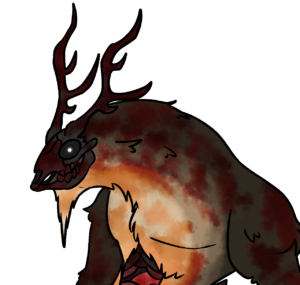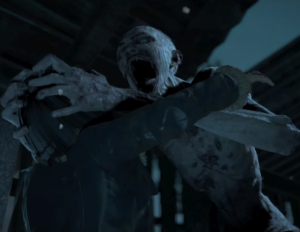
The snow has begun falling.
A thick layer of white powder covers the forest floor like a cloth readying an item for a magician’s vanishing trick.
Snow crunches underfoot as you walk through the wood, the only sound audible in the otherwise frozen wasteland.
But something feels off.
Yet, in the dead of winter, there is some sort of activity in even the most ice-ridden locations. Snow falling from branches, the occasional animal skittering about or a gust of wind.
This time, though. This time there is nothing.
Until the deafening silence is finally broken by rustling from a nearby thicket before a colossal bipedal figure emerges.
Gaunt, emaciated, no longer human.
You have found yourself in the presence of a Wendigo.
The Wendigo is a creature described by indigenous American groups, specifically the Ojibwe, the Saulteaux, the Innu, the Eastern and Westmain Swampy Cree and the Naskapi.
Windigoag, the plural of Wendigo, are creatures that exist almost solely for malevolent purposes.
These giant creatures vary in description, but there are certainly common details.
In her book “Legends of America,” Kathy Weiser-Alexander writes, “The Wendigo is generally said to have glowing eyes, long yellowed fangs, terrible claws, and overly long tongues. Sometimes they are described as having sallow, yellowish skin and other times, depicted to be covered with matted hair.”
More beastly characteristics have also been given to the Wendigo as the story evolved over time.
Modern interpretations and potential sightings assign the creature deer-like qualities with long, pointed antlers, an elongated snout or deer skull mask or head and a thick fur coat covering the otherwise skeletal figure.
However, a Wendigo must be created it does not just simply appear.
There are two different versions of the Wendigo, one based upon the folly of man and one based on questionable means of survival.
As man continued to encroach further into nature, disrupting the natural ecosystem, nature needed a way to fight back. Thus, the spirit of the Wendigo was released, a malignant spirit would possess humans with overwhelming instincts of greed, bloodlust and incessant and unending hunger.
Over time, those unfortunate enough to be possessed would morph and shift into the grotesque figures described in legend.
This version of the legend is often compared with the tale of the Wechuge, a similar creature from the cultures of the Athabaskan peoples.
In the alternate, more widely known version, the Wendigo spirit is not inherently evil, rather it is a punishing force for those who break one of the largest taboos of humanity, cannibalism.

Whether it be for the sake of survival while stranded or simply as a result of a twisted mind, the Wendigo came into existence once a person consumed the flesh of their fellow human.
As a punishment for their crime, the newly born Wendigo grows in proportion to the amount eaten, leaving the creature perpetually starving, unable to fulfill this hunger no matter how many are killed and eaten.
Windigoag are commonly associated with the winter months and snow as they are said to have the ability to travel with the wind, searching the lands for their next meal. The creature is also said to lure those lost in the woods by leaving behind hoof prints that trail into the Wendigo’s cave.
While the cannibalism-induced spiritual curses may seem a bit far-fetched to a skeptical eye, there are real-life parallels found in psychology that have been influenced by the beast.
Wendigo psychosis is a psychological condition that was discovered in the late 1600s, but its legitimacy has been debated in the medical community.
In the tenth edition of the International Classification of Diseases, a diagnostic compendium distributed by the WHO on a wide range of diseases, health and psychological conditions, Wendigo psychosis was included as a cultural-specific disorder.
As a cultural-specific disorder, it is thought to affect only those aware of the folklore of the Wendigo and who live in the regions where the various indigenous groups live.
Wendigo psychosis describes the onset of a dreadful feeling accompanied by a feeling of murderous intent and a craving for human flesh.
The psychosis has been reported to occur primarily in individuals who find themselves in secluded situations, often stuck with no way to reach the outside world, such as in the middle of a blizzard.
Consistent, peer-reviewed reports have become hard to come by in recent years when the debate of the condition’s legitimacy was still up for debate. However, there were at least 70 cases reported in North America through the mid-1900s.
Certain historical cases of cannibalism have been argued to be attributed to the courses such as the cannibalism seen in the lost Donner wagon party.
Despite the psychological explanation, reports of Wendigo sightings have continued into the 21st century, especially any time a particularly brutal winter rolls around.
Whether a psychological condition or a truly evil presence that lurks in the barren icy woodlands of North America, the Wendigo has certainly retained its twisted reputation as a force to be reckoned with.

